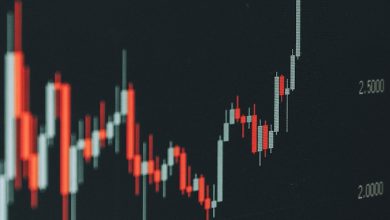Understanding Trading Indicators and Their Uses

- Introduction to Trading Indicators
- Types of Trading Indicators
- Popular Trading Indicators
- How to Use Trading Indicators Effectively
- Interpreting Trading Indicators
- Common Mistakes When Using Trading Indicators
Introduction to Trading Indicators
Trading indicators are essential tools used by traders to analyze market trends, make informed decisions, and maximize profits. These indicators are mathematical calculations based on historical price, volume, or open interest data. By interpreting these indicators, traders can predict future price movements and identify potential trading opportunities.
There are various types of trading indicators, each serving a specific purpose. Some common indicators include moving averages, relative strength index (RSI), stochastic oscillator, and Bollinger Bands. These indicators provide valuable insights into market trends, momentum, volatility, and potential reversal points.
Understanding how to use trading indicators effectively can significantly improve a trader’s success rate. By combining multiple indicators and analyzing them in conjunction with other market factors, traders can make more informed trading decisions. It is important to note that no single indicator can guarantee success, and it is essential to use a combination of indicators for a comprehensive analysis.
Whether you are a beginner or an experienced trader, mastering the art of using trading indicators can give you a competitive edge in the market. By continuously learning and experimenting with different indicators, you can refine your trading strategies and increase your chances of success. Stay tuned for more in-depth discussions on specific trading indicators and their practical applications.
Types of Trading Indicators
Trading indicators are essential tools for traders to analyze market trends and make informed decisions. There are various types of trading indicators that traders can use to gain insights into the market conditions and predict future price movements. Some common types of trading indicators include trend-following indicators, momentum indicators, volatility indicators, and volume indicators.
Trend-following indicators are used to identify the direction of the market trend. They help traders determine whether the market is moving upwards, downwards, or sideways. Some popular trend-following indicators include moving averages, the Moving Average Convergence Divergence (MACD), and the Average Directional Index (ADX).
Momentum indicators, on the other hand, are used to measure the speed and strength of price movements. They help traders identify overbought or oversold conditions in the market, which can signal potential trend reversals. Some common momentum indicators include the Relative Strength Index (RSI), the Stochastic Oscillator, and the Commodity Channel Index (CCI).
Volatility indicators are used to measure the magnitude of price fluctuations in the market. They help traders assess the risk associated with a particular trade and adjust their strategies accordingly. Some popular volatility indicators include the Average True Range (ATR), Bollinger Bands, and the Volatility Index (VIX).
Volume indicators, as the name suggests, are used to analyze trading volume in the market. They help traders gauge the level of market participation and confirm the strength of a trend. Some common volume indicators include the On-Balance Volume (OBV), the Chaikin Money Flow, and the Volume Weighted Average Price (VWAP).
Overall, understanding the different types of trading indicators and how to use them can help traders make more informed trading decisions and improve their overall performance in the market. By incorporating a variety of indicators into their analysis, traders can gain a comprehensive view of market conditions and increase their chances of success.
Popular Trading Indicators
Trading indicators are essential tools for traders to analyze the financial markets and make informed decisions. There are several popular trading indicators that traders commonly use to gain insights into market trends and potential price movements.
One widely used indicator is the Moving Average, which helps traders identify trends by smoothing out price data over a specified period. Another popular indicator is the Relative Strength Index (RSI), which measures the speed and change of price movements to determine overbought or oversold conditions.
The Moving Average Convergence Divergence (MACD) is another commonly used indicator that combines moving averages to signal potential trend changes. Bollinger Bands are also popular among traders, as they help identify potential overbought or oversold conditions based on volatility levels.
Additionally, the Fibonacci Retracement tool is widely used to identify potential support and resistance levels based on the Fibonacci sequence. The Stochastic Oscillator is another popular indicator that measures the momentum of price movements to determine overbought or oversold conditions.
By understanding how these popular trading indicators work and incorporating them into their analysis, traders can improve their decision-making process and increase their chances of success in the financial markets. It is important for traders to experiment with different indicators and find the ones that work best for their trading style and goals.
How to Use Trading Indicators Effectively
Using trading indicators effectively can significantly enhance your trading strategy and decision-making process. Here are some tips to help you make the most of these powerful tools:
- Understand the purpose of each indicator: Before using any trading indicator, take the time to understand what it measures and how it can help you analyze market trends.
- Avoid using too many indicators at once: Overloading your charts with multiple indicators can lead to confusion and conflicting signals. Focus on a few key indicators that complement each other.
- Combine indicators for confirmation: Using multiple indicators that confirm each other’s signals can increase the reliability of your trading decisions.
- Adjust the settings: Most trading indicators allow you to customize their settings to better suit your trading style and preferences. Experiment with different settings to find what works best for you.
- Use indicators in conjunction with other analysis tools: Trading indicators should not be used in isolation. Combine them with other forms of technical and fundamental analysis for a more comprehensive view of the market.
- Stay informed: Keep yourself updated on the latest developments in the market and adjust your trading indicators accordingly. Market conditions can change rapidly, so it’s essential to adapt your strategy as needed.
By following these guidelines and using trading indicators judiciously, you can gain valuable insights into market trends and make more informed trading decisions. Remember that trading indicators are just one tool in your trading arsenal and should be used in conjunction with other forms of analysis for optimal results.
Interpreting Trading Indicators
Trading indicators are essential tools used by traders to analyze market trends and make informed decisions about buying and selling assets. These indicators are mathematical calculations based on the price, volume, or open interest of a security. Interpreting trading indicators requires a good understanding of how they work and what they represent in the context of market movements.
One common type of trading indicator is the moving average, which helps traders identify trends by smoothing out price fluctuations over a specific period. Another popular indicator is the Relative Strength Index (RSI), which measures the magnitude of recent price changes to evaluate overbought or oversold conditions in a market. Traders also use the Moving Average Convergence Divergence (MACD) indicator to identify changes in a trend’s momentum.
When interpreting trading indicators, it is essential to consider them in conjunction with other technical analysis tools and market information. It is crucial to avoid relying solely on one indicator to make trading decisions, as no single indicator can provide a complete picture of market dynamics. Instead, traders should use a combination of indicators to confirm trends and patterns before executing trades.
In conclusion, understanding and interpreting trading indicators is a crucial skill for traders looking to navigate the complex world of financial markets successfully. By using a variety of indicators in combination with other tools and market data, traders can gain valuable insights into market trends and make informed decisions that can lead to profitable trading outcomes.
Common Mistakes When Using Trading Indicators
One common mistake when using trading indicators is relying too heavily on just one indicator to make trading decisions. It’s important to remember that no single indicator is foolproof, and using a combination of indicators can provide a more comprehensive view of market conditions. This can help reduce the risk of making poor trading decisions based on incomplete information.
Another mistake traders often make is not taking the time to fully understand how a particular indicator works before using it. Each indicator has its own set of rules and parameters that dictate how it should be interpreted. Failing to understand these nuances can lead to misinterpretation of signals and ultimately result in losses.
Overloading charts with too many indicators is also a common mistake traders make. This can create confusion and make it difficult to see clear signals. It’s important to be selective about which indicators to use and to choose ones that complement each other rather than duplicate information.
Additionally, some traders make the mistake of ignoring the context in which an indicator is being used. Market conditions, trends, and other factors can all impact the effectiveness of an indicator. It’s crucial to consider the bigger picture when using indicators to make informed trading decisions.



